Contents:
Pennies have long been considered a small yet significant part of the numismatic history in the US. Often overlooked, widely circulated, yet wholeheartedly cherished... These small pieces are not apparently valuable, though they can fetch hundreds or thousands of dollars when sold. The 1967 no mint mark penny is no exception.
When regular-circulation cents are released, these are barely considered worthy, but time makes all the difference. Over the years, they grow in value, thanks to such constituents as condition, designation, and other peculiar attributes that matter. So, why is the hero of the article so special? Which features identify this coin as a valuable asset? And what is its current price as of 2025?
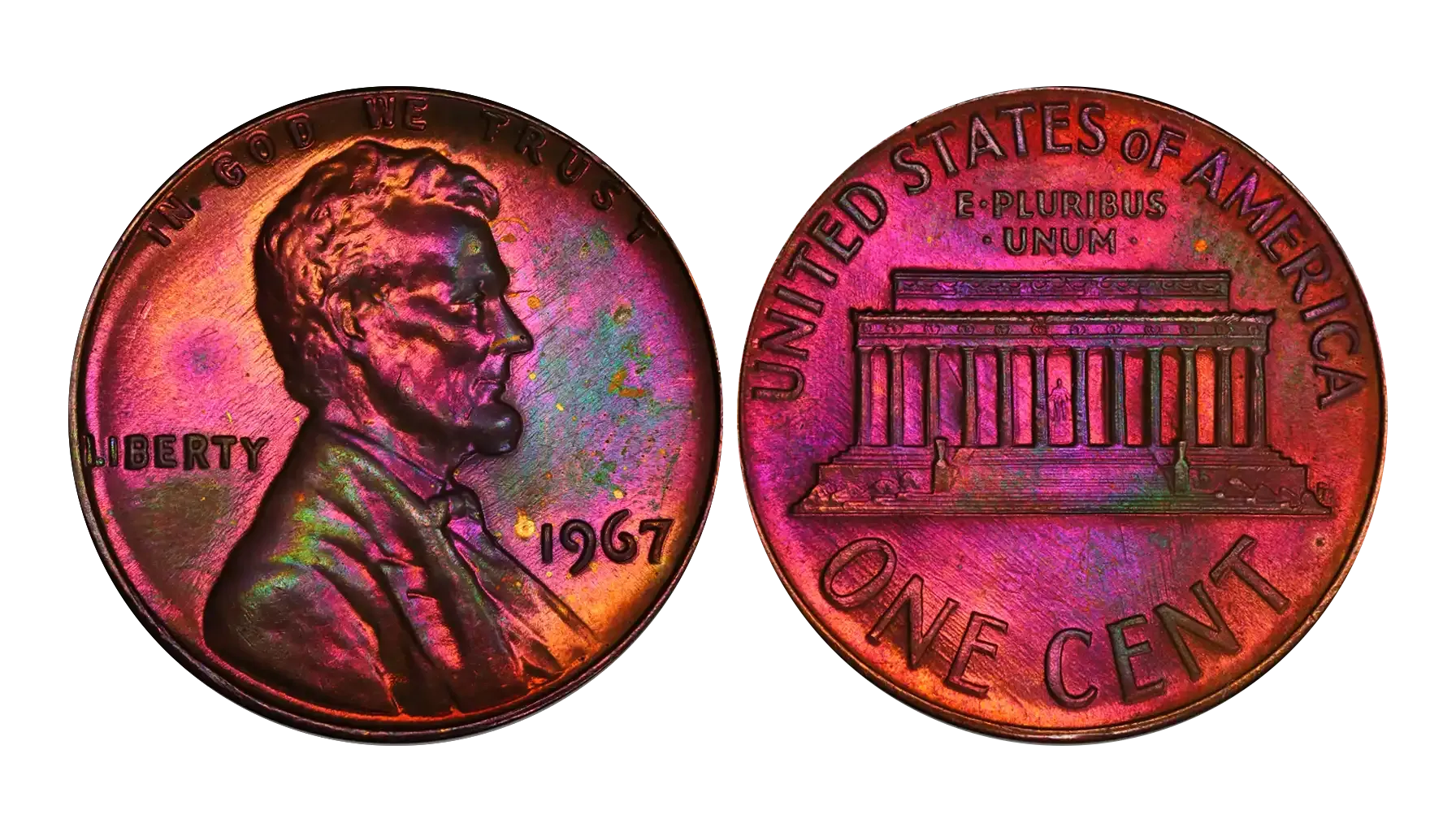
Historical Context
The transitional periods are not quite rare in American coinage history. These often occur as responses to the ongoing cultural, social, or political shifts that cannot but influence the monetary system anyway. The 1967 penny no mint mark was issued right on the verge of such a shift, when the US Mint was actively modernizing its operations, phasing out silver from circulation coins, and implementing new policies to stabilize coin distribution during the public hoarding rage and numismatic crisis.
No Mint Marks Policy
Initially drawn by the mint marks that indicated the Mint's affiliation, collectors pulled large quantities of coins from circulation in search of specific mint varieties. This inevitably led to the shortages, which made it almost impossible to use small denominations in daily transactions.
The Coinage Act of 1965 changed the way the numismatic market worked. From 1965 to 1967, the US Mint implemented a temporary policy that meant that they had to suspend the use of mint marks on all coins meant for circulation. Without mint marks to distinguish one coin from another, as authorities believed, there would be less incentive for collectors and speculators to hoard coins. It was a kiss of life or, rather, of the Mint that actually worked.
Related article: 1965 Jefferson Nickel: The Year Mint Marks Disappeared
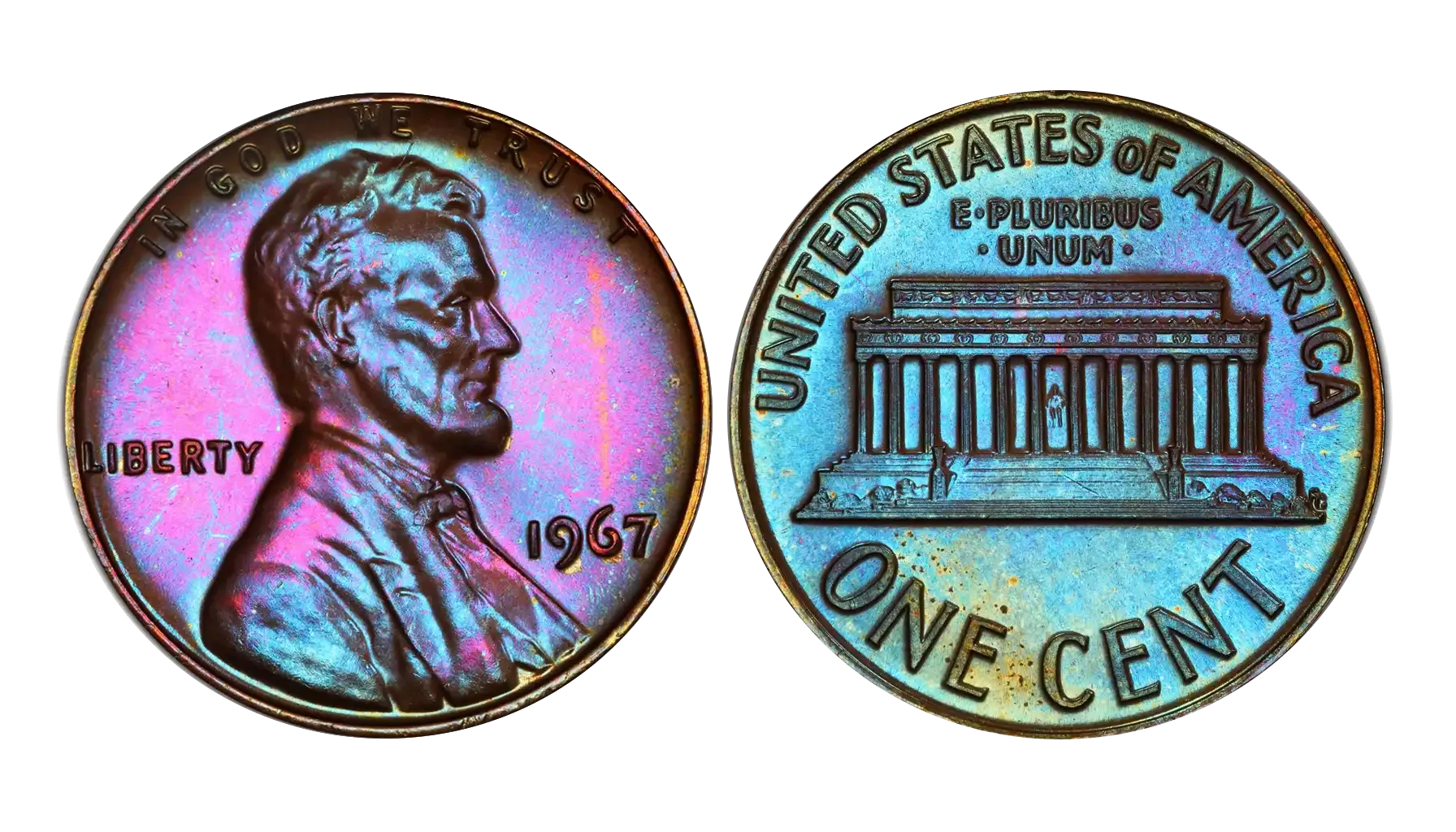
Specifications of the 1967 Lincoln Cent
Obverse: The obverse features a right-facing bust of President Abraham Lincoln by Victor David Brenner, accompanied by the inscriptions "IN GOD WE TRUST" arched along the top rim, "LIBERTY" positioned to the left of the profile, and the year of production "1967" to the right.
Reverse: The reverse demonstrates an image of the Lincoln Memorial with a tiny seated Lincoln statue, introduced in 1959 to replace the original wheat ears design, as well as the inscriptions "UNITED STATES OF AMERICA" along the upper edge, "E PLURIBUS UNUM" above the Lincoln Memorial, and "ONE CENT" placed along the bottom edge.
The Main Features of the Coin | |
Composition | 95% copper, 5% zinc |
Weight | 3.11 grams |
Diameter | 19.05 mm (0.75 inches) |
Thickness | 1.52 mm (0.0598 inches) |
Mint Marks | None |
Edge | Plain (smooth) |
Obverse Designer | Victor David Brenner |
Reverse Designer | Frank Gasparro |
Strike Types | Business Strike, Special Mint Set (SMS) |
Mints Involved | Primarily Philadelphia (other mints unmarked) |
1967 Lincoln Penny Types and Varieties
1967 1C (Business Strike)
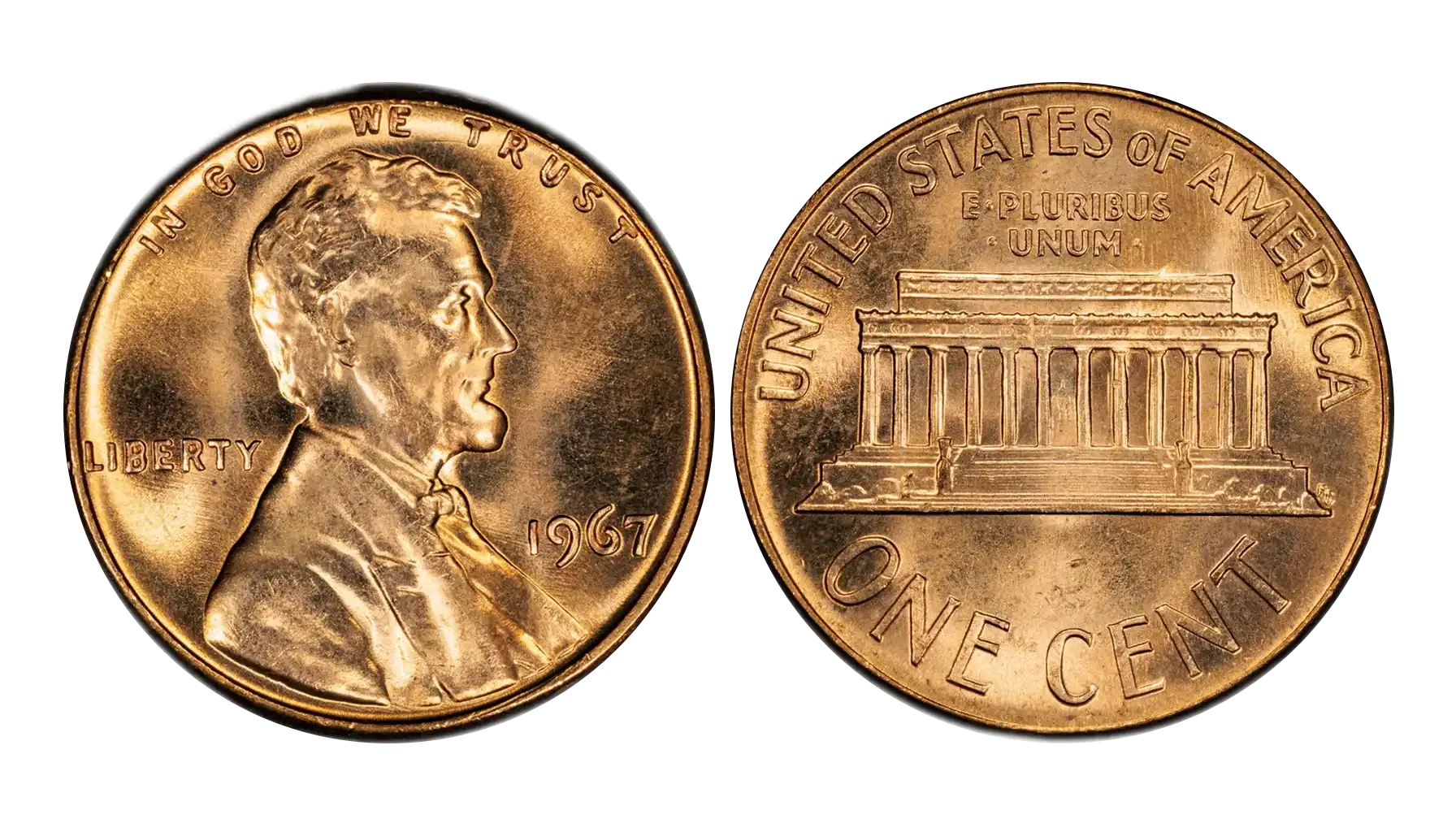
Produced by: Philadelphia Mint
Mintage: 3,048,667,100
Auction Record: $4,945 for MS67
The power of numismatic creations that lack mint marks is hardly explored. Although its attribution to the original mint is blurred, it is still valuable to obtain pieces from the Philadelphia Mint. Although these are extremely common in circulated condition, high-grade Mint State pieces can be sold for impressive prices, which will be covered further.
As for the general 1967 penny value constituents, these also include color designations, namely:
BN (Brown): Less than 5% original red luster.
RB (Red-Brown): 5% to 95% original red luster
RD (Red): At least 95% original red luster
1967 1C SMS (Special Mint Set)
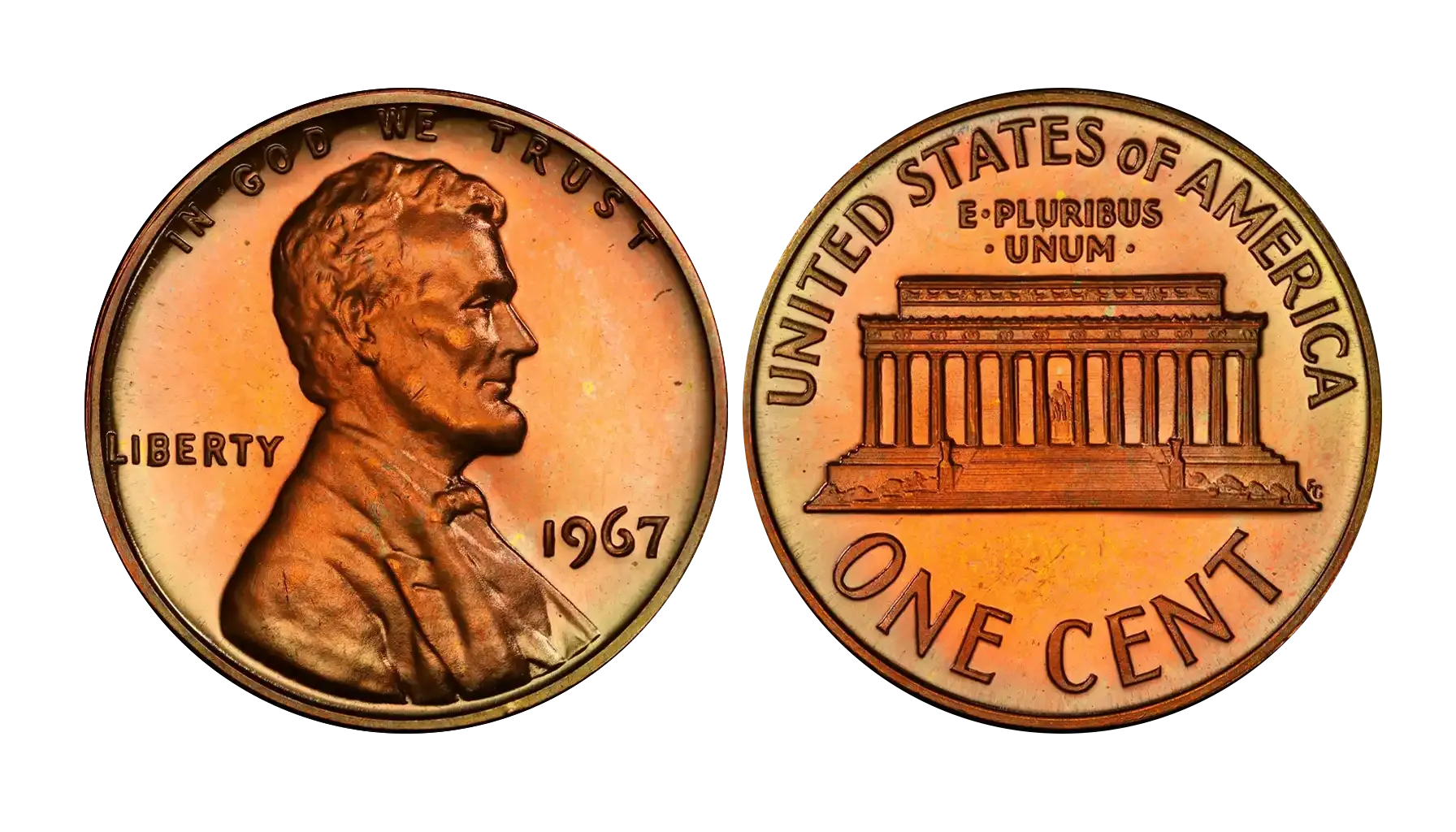
Produced by: San Francisco Mint (no mint mark)
Mintage: 1,863,344
Auction Record: $5,581 for SP68 RD DCAM
As soon as the regular issue was released only within one design framework, there were also introduced SMS (Special Mint Set) pieces, which were intended to replace proofs. Nonetheless, these are not the proofs: they do exhibit satin or slightly mirrored surfaces, but the overall quality is not as fine (i.e., exceptional) as that of a proof piece.
Anyway, the designations could not leave SMS pieces uninfluenced:
RD, RB, BN: As with regular cents, indicating copper color.
CAM (Cameo): Frosted devices and mirrored fields.
DCAM (Deep Cameo): Strong contrast between devices and fields.
A Valuable 1967 Penny Error List
Misaligned Die Error (“WE Trust” on Rim)
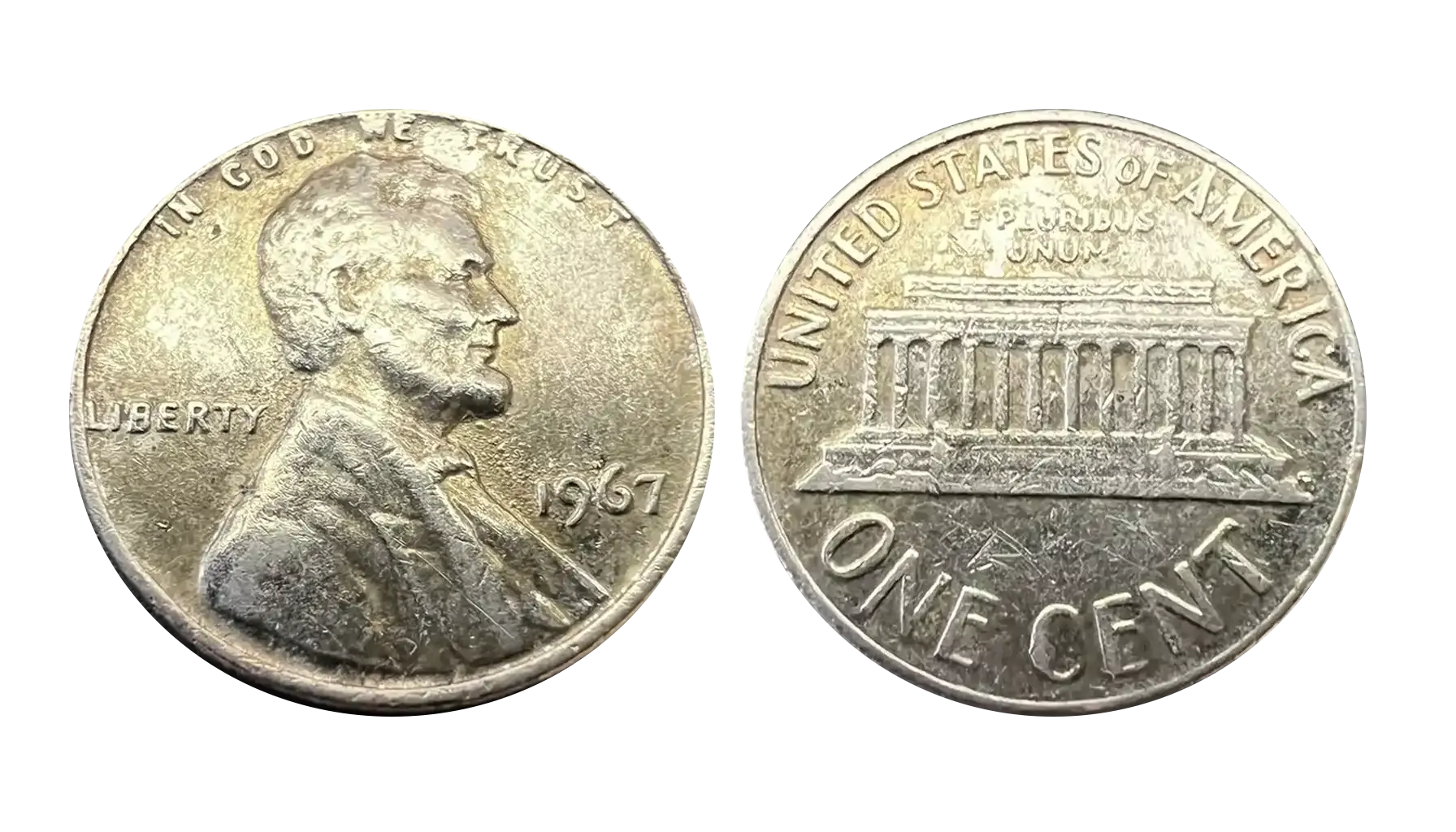
Estimated Value: $1,400
First come the most valuable deviations -- the misaligned error that results from a significant misalignment of the die, which causes a part of the motto "IN GOD WE TRUST" ("WE TRUST" in particular) to appear partially on the coin’s rim or edge. This makes this penny rare, i.e., a piece that would be hunted by collectors especially intensely.
Die Deterioration Doubling (“Crowded L” in LIBERTY)
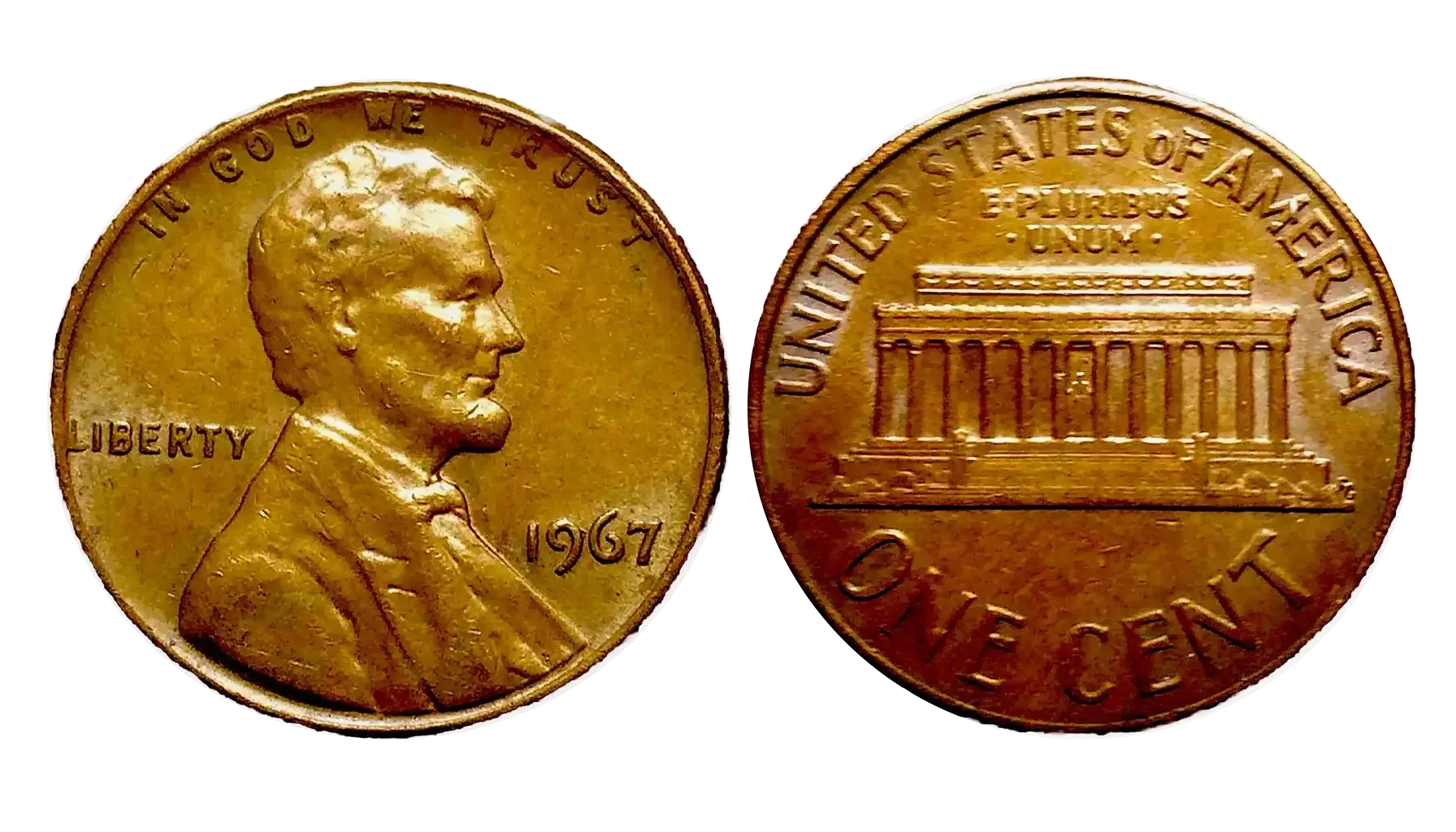
Estimated Value: $500
According to the reputable coin auction platforms, this variety is among the most widespread, and it features heavy die wear or minor doubling that causes the “L” in LIBERTY to appear unusually close to Lincoln’s profile. Notwithstanding the fact that it is often confused with mechanical doubling, the flaw is rather subtle but collectible when paired with high grades and fine history.
Off-Center Strike
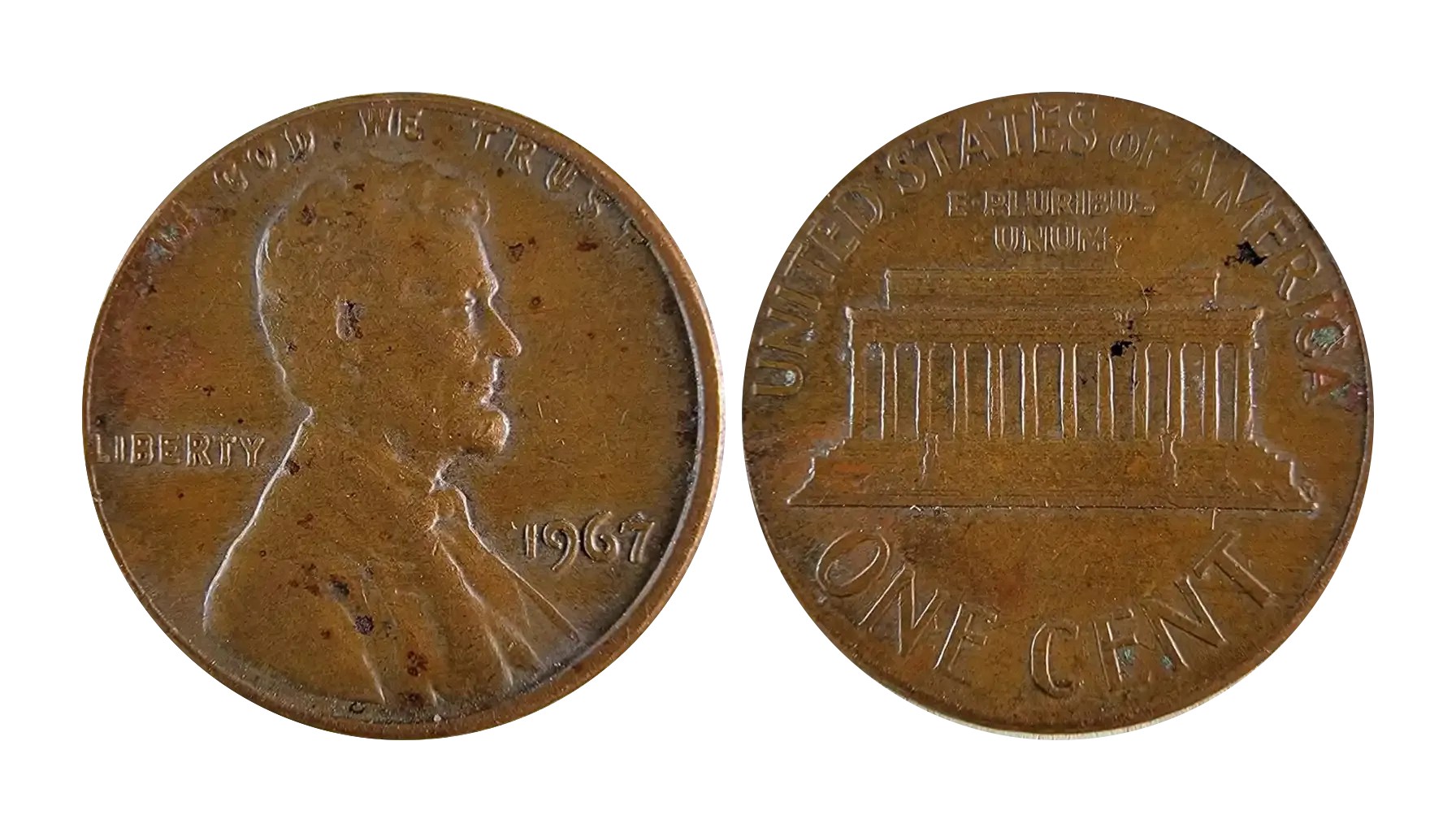
Estimated Value: $1–$100+
Finally, here is the least precious piece with the design struck off-center, leaving part of the planchet blank. The 1967 penny value no mint mark should depend on how far off the strike is (5% to 90%) and whether the date remains visible, which is crucial for attribution.
Why Condition Matters
Is a 1967 penny worth anything? Yes, but to understand the genuine value, it is important to pay special attention to the condition and visual quality. Why aspects to consider?
The Grading Scale
As a rule, coins are graded according to the 70-point scale, where:
Circulated pieces range from Poor (P-1) to About Uncirculated (AU-58)
Uncirculated pieces are Mint State (MS-60 to MS-70)
The higher grade, the higher value
Color Designations
Copper coins naturally change color over time. Grading services assign one of three designations to define how close to the original luster these creations are:
BN (Brown): Fully toned or darkened surfaces
RB (Red-Brown): Partial original red luster
RD (Red): Full red mint luster, most valuable
+ CAM and DCAM, yet those belong to another group, which is to be discussed further.
SMS Strike Quality
Special Mint Set (SMS) pieces may be considered overly valuable, especially when compared to their regular versions. But why?
Unlike standard business strikes, SMS coins were produced with special care and higher-quality dies, which presupposes sharper details, cleaner surfaces, and a more refined finish. Though they were not struck to the same level of perfection as proof coins, they fall somewhere in between – it is a hybrid quality that appeals strongly to collectors.
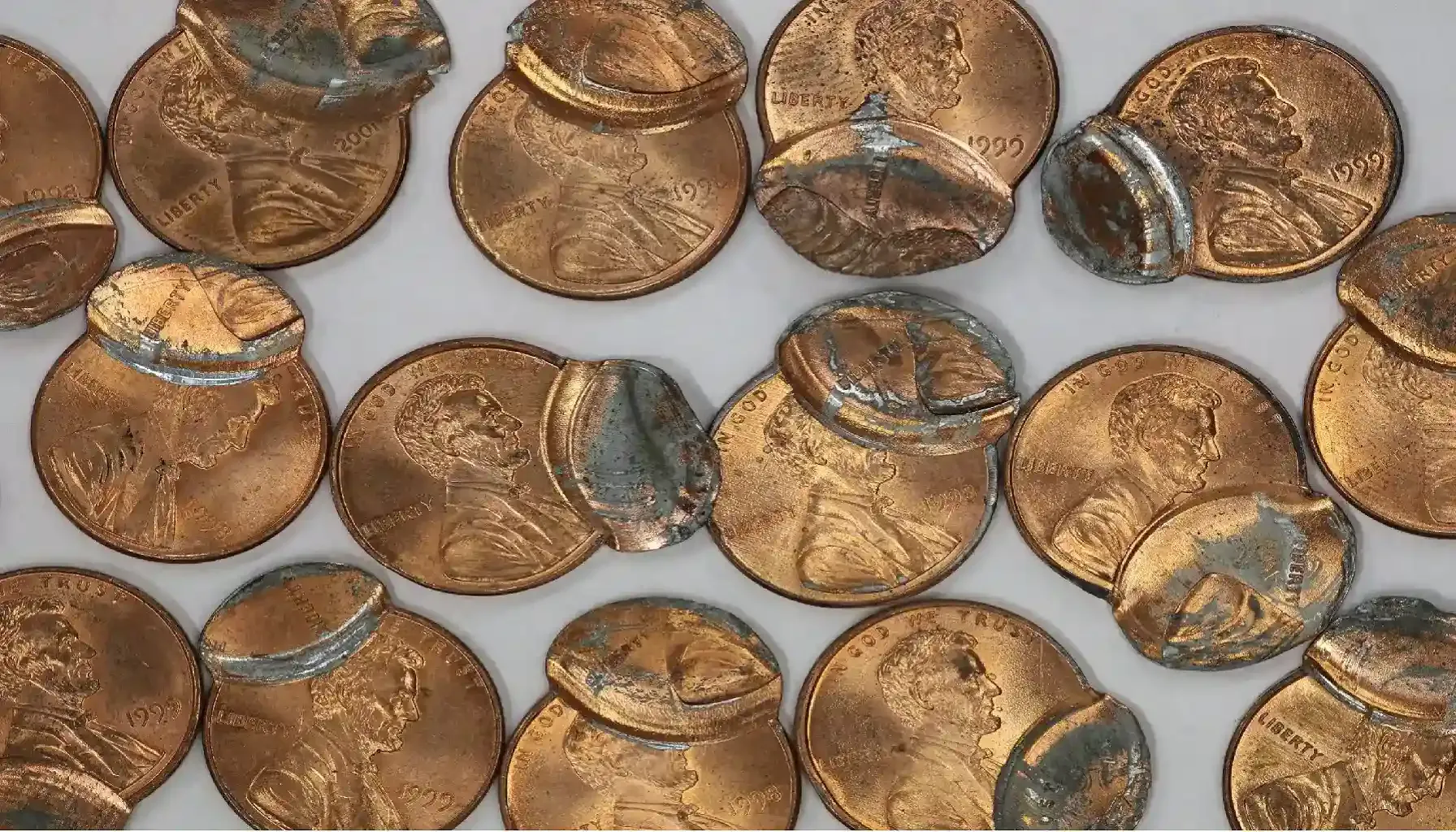
How Much Is a 1967 Penny Worth?
In general, the 1967 penny no mint mark value refers to its face value only, but certain examples, i.e., particularly those in uncirculated grades or from Special Mint Sets, can be worth significantly more. As we have briefly covered before, the value of a coin mainly depends on its grade, color designation, and strike quality, as well as special circumstances of a given unit or US penny errors, not to mention.
Collectors pay special attention to the numismatic creations with full red (RD) luster or those that earn cameo (CAM) and deep cameo (DCAM) designations in SMS format. Below is a general value guide for the two main types of 1967 pennies, i.e., the regular business strike and the Special Mint Set (SMS) issue.
Type | Grade | Brown (BN) | Red-Brown (RB) | Red (RD) / CAM / DCAM |
Business Strike | VF20 – XF40 | Face value | – | – |
AU50 – AU58 | $0.10 – $0.25 | – | – | |
MS60 – MS63 | $0.25 – $0.75 | $0.50 – $1.50 | $1 – $3 | |
MS64 – MS65 | $1 – $3 | $2 – $5 | $5 – $15 | |
MS66 – MS67 | $10 – $30 | $20 – $40 | $50 – $250+ | |
Special Mint Set | SP60 – SP63 | $0.75 – $2 | $1 – $3 | $2 – $6 |
SP64 – SP65 | $3 – $6 | $5 – $12 | $10 – $25 | |
SP66 – SP67 | $10 – $20 | $20 – $40 | $40 – $150+ | |
SP67 CAM | – | – | $100 – $300+ | |
SP67 DCAM | – | – | $300 – $600+ | |
SP68 DCAM | – | – | $1,000 – $5,500+ |
Is Your Coin Valuable? Scan It First!
Before you rush to submit your coin to professional grading services like NGC, it is worth taking a closer look. Many pieces look similar on the surface, but subtle differences in strike quality, color, or even minor errors can drastically change their value for good.
Tools like Coin ID Scanner may save you money and time, for it serves as your personal numismatic assistant that may do the following:
Instantly identify the coin’s type, date, and origin
View estimated market values based on condition and rarity
Spot features like SMS finishes, color designations, or possible error patterns
Keep track of what is in your collection with a digital inventory
Make your collecting experience a bit more profound. Remember: not every coin is worth grading, but the right one might be hiding too close to be seen.
You can also review this: Is Coin Grading Cost Worth It? What You Should Expect
Sometimes, coins should not seem extraordinary to be valuable: their place in numismatic history makes all the difference all on its own. Happy collecting, and do not forget to check your change!



